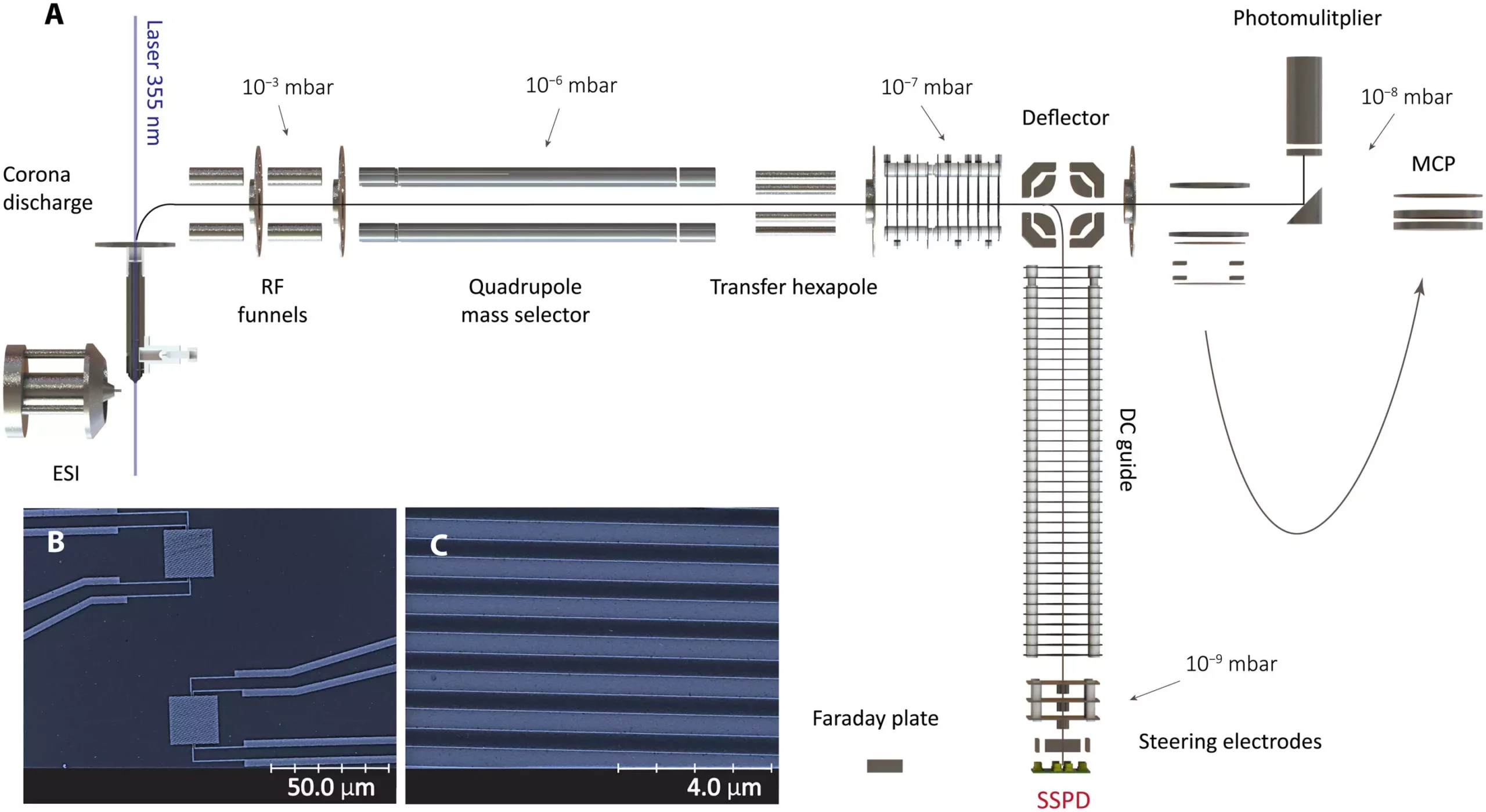Protein research, diagnostics, and analytics have greatly benefited from the detection, identification, and analysis of macromolecules. Mass spectrometry, a commonly used detection system, has allowed for the separation of charged particles based on mass-to-charge ratio and the measurement of signal intensity generated by a detector. However, traditional detectors have had limitations, particularly in detecting particles with low-impact energy. This drawback has been overcome by an international research team led by quantum physicist Markus Arndt from the University of Vienna, using superconducting nanowire detectors.
The breakthrough achieved by the research team lies in the high energy sensitivity of superconducting nanowire detectors, which results in almost 100% quantum efficiency. These detectors surpass the detection efficiency of conventional ion detectors at low energies by up to a factor of 1,000. Additionally, unlike traditional detectors, superconducting nanowire detectors have the ability to distinguish macromolecules based on their impact energy. This enables more sensitive protein detection and provides valuable information in mass spectrometry.
Superconducting nanowires exhibit a unique material property known as superconductivity, which allows for lossless current flow at very low temperatures. Nanowires in a superconducting state experience a quantum transition when excited by incoming ions, returning to a normal conducting state. This transition is interpreted as a detection signal due to the change in electrical properties. The utilization of superconducting nanowires in protein detection offers a remarkable quantum yield at exceptionally low impact energies, surpassing the capabilities of conventional detectors by up to three orders of magnitude.
The introduction of nanowire detectors in mass spectrometry opens up new possibilities in various fields. By adapting a mass spectrometer with quantum sensors, molecules can be classified not only based on their mass-to-charge state but also according to their kinetic energy. This advancement leads to improved detection and offers the potential for better spatial resolution. Nanowire detectors have the potential to revolutionize mass spectrometry, molecular spectroscopy, molecular deflectometry, and quantum interferometry of molecules, particularly in applications where high efficiency and good resolution are critical at low impact energy.
The breakthrough achieved by Markus Arndt and his international research team in the detection of protein ions using superconducting nanowire detectors marks a significant advancement in protein research, diagnostics, and analytics. The high energy sensitivity and ability to distinguish macromolecules based on impact energy has revolutionized mass spectrometry and provides valuable insights into the composition of samples. The remarkable quantum yield at low impact energies opens up new possibilities in various scientific fields, paving the way for improved detection and spatial resolution. Superconducting nanowire detectors are poised to redefine the capabilities of conventional detectors and usher in a new era of protein ion detection.


Leave a Reply